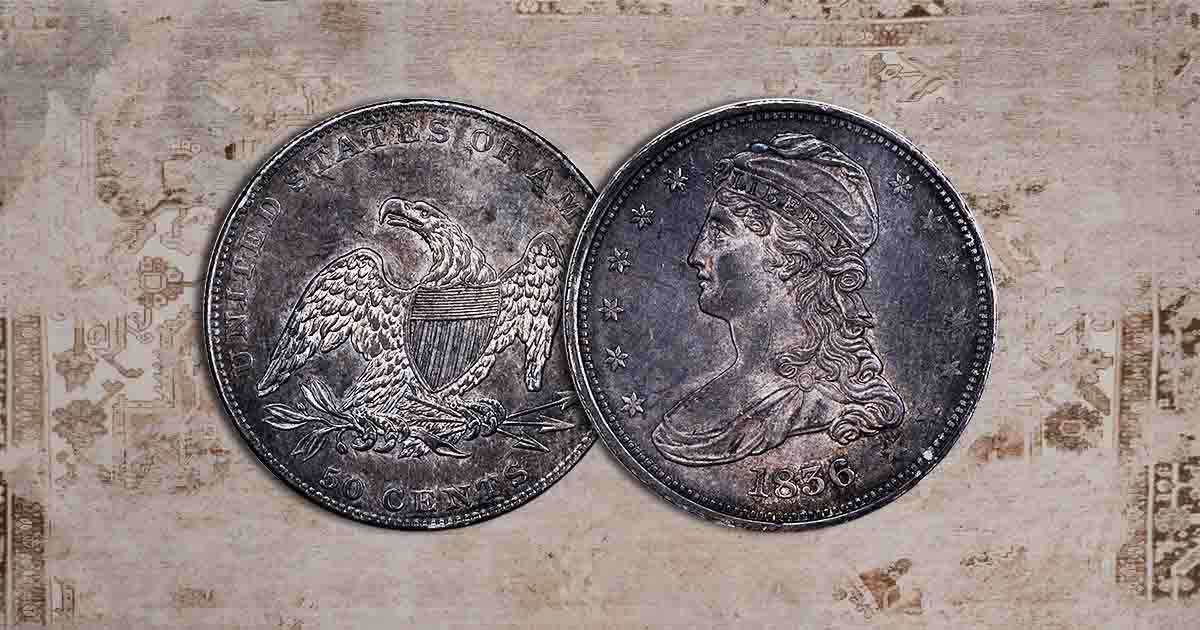
The Capped Bust Half Dollar series is a highly-collectible series of United States silver Half Dollar coins, struck between 1807 and 1839. These coins are very popular due to their large size, silver content, and historical significance. From 1850 to 1940, many of these coins remained in Eastern banks rather than having migrated West, so quantities of surviving coins are higher than other silver coins of the era. Additionally, many of the coins remained in higher grade as they saw little circulation or commerce during their lifetime.
The standard reference book on these coins was written by Al C. Overton. Instead of simply defining years and mintages, Overton broke down his book into the very specific die marriages and varieties that you’d encounter when trying to complete a collection. All varieties are identified by their “Overton” number, such as O-107.
The purpose of this article is not to define every die combination as that would comprise a book of hundreds of pages and all of the accompanying plates for positive identification. The sole purpose of this article is to help you understand which dates and easily-identified varieties are scarce and valuable, and which ones are not.
This series was preceded by Flowing Hair Half Dollars in 1794 and 1795 and by Draped Bust Half Dollars which were struck between 1796 and 1807. Later in 1836 a reeded edge variety of Capped Bust Half Dollar was struck through 1839. All of these coins make up the Bust Half Dollar series.
To learn more about the history of these coin series, read our guide on Bust Half Dollars.
Key Dates & Varieties
1807, Large stars, 50 Cents Over 20 Cents
Despite a mintage of 839,576, this is a scarce coin in all conditions. On the obverse the stars are larger than typical, and, on the reverse, you can see the evidence of the “20” under the “:50 C.”
1807 Bearded Goddess Variety
The “Bearded Goddess” variety depicts the typical Miss Liberty obverse, but there is a long thin trail of what is called a ‘beard’ emanating from Miss Liberty’s chin.
1812/1 Large 8 Variety
This Overdate 1812 Over 1811, has a Large ‘8’ in the date. The overdate is readily visible and the ‘8’ in the date is larger than the other digits and is readily recognizable.
1815/2
This date has a total mintage of only 47,150 coins, so all examples are scarce. There are 3 separate varieties but all of them are overdates.
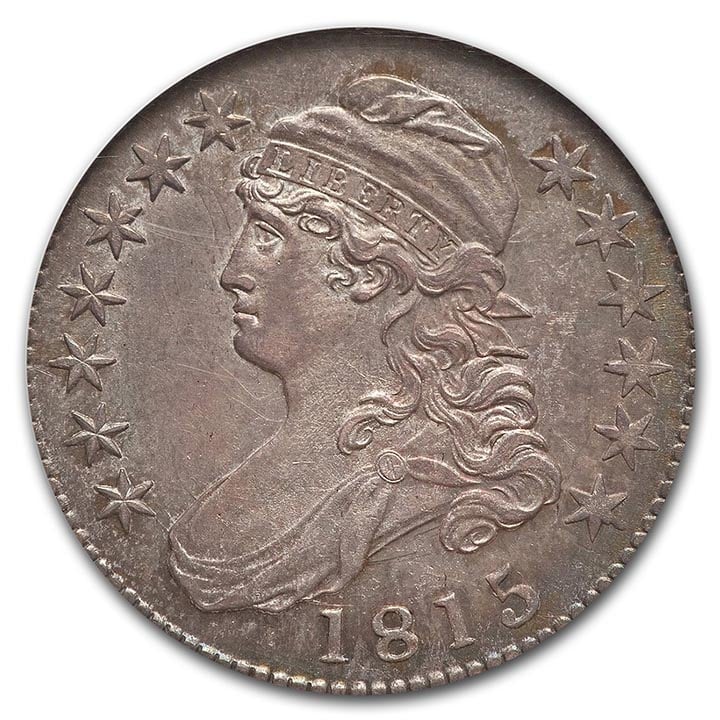
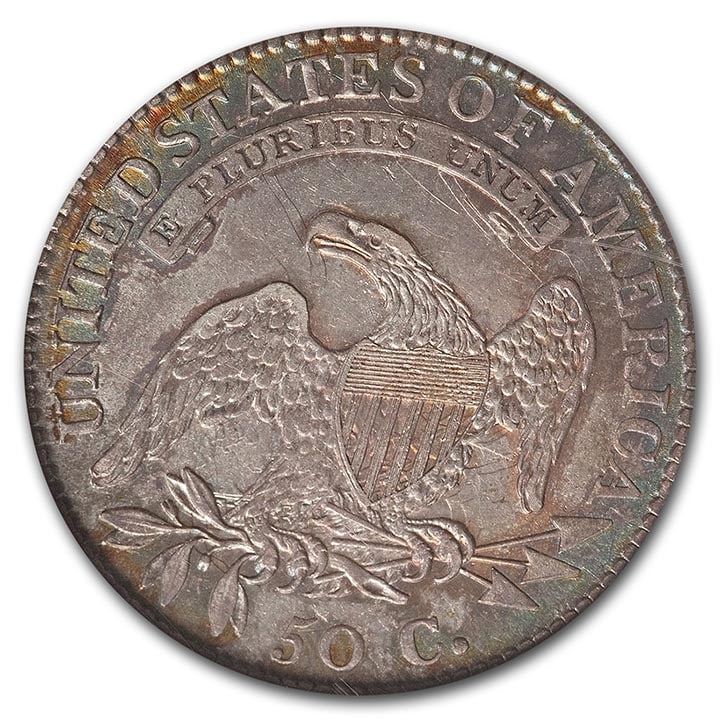
1815/2 Capped Bust Half Dollar, 1815 Over 2, Overdate
1817/4
The 1817 Capped Bust Half Dollars are commonly 1817/3 overdates. The 1817/4 overdate is very scarce and expensive. It is easy to identify by the parts of the ‘4’ that are still visible underneath.
1820 – No Left Side Serifs on ‘E’s
While the 1820 date common Capped Bust Half Dollars are easy to find with a mintage of over 750,000, the varieties that are missing the left-side serifs on the ‘E’s on the reverse are very scarce. This variety is quite easy to identify.
1823 – Broken 3
The 1823 Capped Bust Half Dollar has several varieties – Normal 3, Broken 3, Patched 3 and the Ugly 3. The scarcest variety of this date is Broken 3.
1824 4 Over 4 (Several Varieties)
The 1824 Capped Bust Half Dollars have numerous overdates due to the reusing of multiple obverse dies in order to produce 3,504,954 coins. The most popular and important of thee overdates is the 1824 $ Over 4, of which there are a couple of varieties of that specific overdate.
The overdate ‘4’ is usually further to the right of the ‘2’ than the distance between the 3 other digits. The underlying ’4’ is usually closer to the other three digits and oftentimes it is higher than the over digit.
1827 7 Over 6
Of the numerous varieties of 1827- dated Capped Bust Half Dollars, the 1827 7 Over 6 is the scarcest of all of the varieties for this particular date.
1830 Large Letters
There are several varieties of 1830-dated Capped Bust Half Dollars. The variety with Large Letters is, by far, the scarcest and most valuable of all of them.
Beginning in 1836, the new US Mint engraver, Christian Gobrecht, updated the design of the Capped Bust Half Dollar. Most notably, Miss Liberty gained a more youthful appearance and a longer profile and to easily distinguish this design, the Half Dollars went from a Lettered Edge to a Reeded Edge. These modifications were applicable on 1836 through 1839-dated Half Dollars.
1836
In 1836, more than 6.5 million of the original design coins were struck. Of the new Gobrecht design, a mere 1,200 coins were struck. Because of this tiny mintage, the 1836 Reeded Edge Capped Bust Half Dollar is a truly scarce coin and is highly sought after.
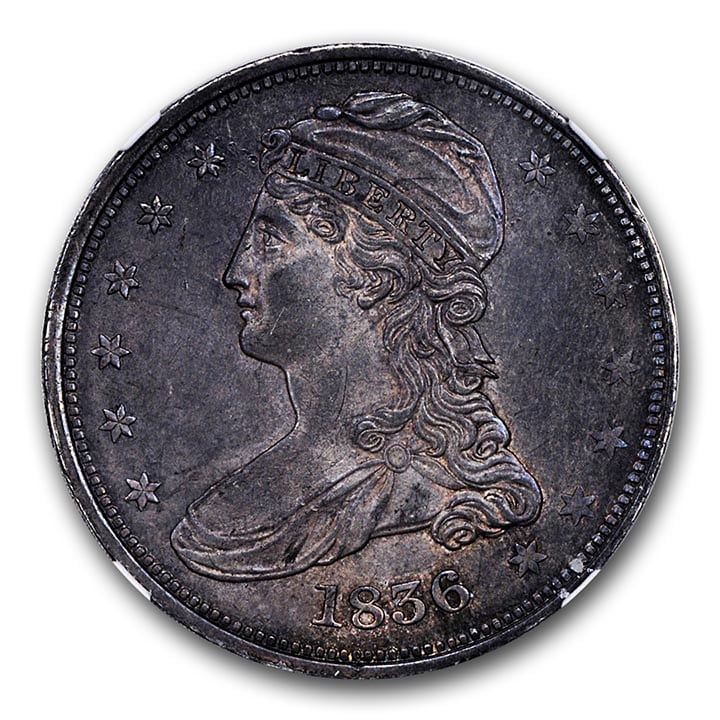
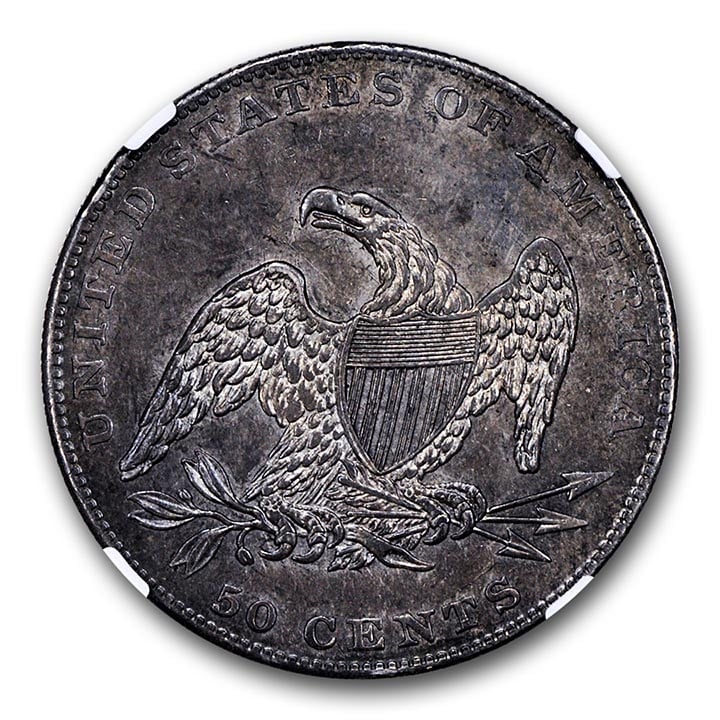
1836 Reeded Edge, Capped Bust Half Dollar
1839 Reeded Edge, Capped Bust Half Dollar, Small Letters Reverse
The Small Letters Reverse coin has significantly smaller letters than the ‘normal’ 1839-dated coin.
1839-O Reeded Edge, Capped Bust Half Dollar
This coin has the distinction of being the only coin in the entire capped bust half dollar series to bear a mintmark – the “O” is conspicuously below the date. Only 116,000 were struck at the New Orleans Mint.
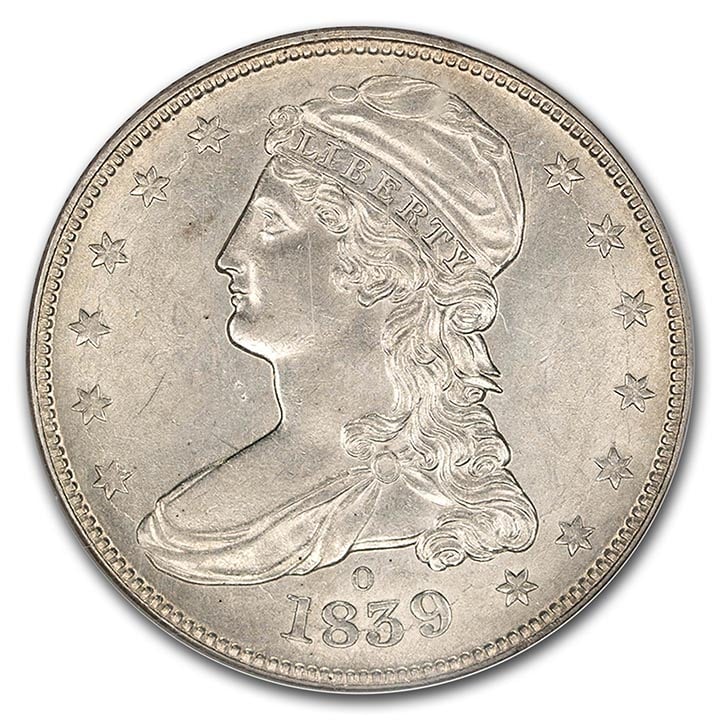
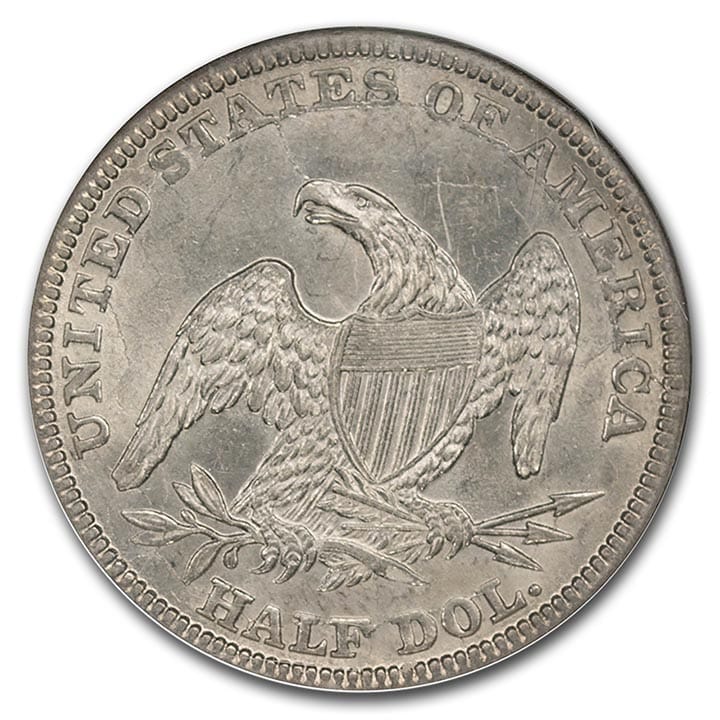
1839-O Reeded Edge, Capped Bust Half Dollar
Values of Capped Bust Half Dollars
| Date, Variety | Mintage | Very Fine | Abt Unc | Ch Unc |
| 1807, Lg Stars, 50 Over 20 Cents | Included | $7,500 | $22,000 | —- |
| 1807 Bearded Goddess | Included | $12,500 | $55,000 | —- |
| 1812/1 Large 8 | Included | $14,000 | $30,000 | —- |
| 1815/2 Overdate | 47,150 | $6,000 | $17,500 | $40,000 |
| 1817/4 Overdate | Included | $295,000 | $450,000 | —- |
| 1820 No Serif E’s | Included | $7,000 | $40,000 | —- |
| 1823 Broken 3 | Included | $500 | $3,000 | $12,500 |
| 1824 4/4 | Included | $300 | $1,500 | $3,500 |
| 1827 7/6 | Included | $300 | $1,750 | $4,500 |
| 1830 Large Ltrs | Included | $4,000 | $7,000 | $25,000 |
| 1836 Reeded Edge | 1,200 | $3,750 | $9,000 | $20,000 |
| 1839 Sm Ltrs Rv | 1,392,976 | $70,000 | $125,000 | —- |
| 1839-O RE | 116,000 | $3,000 | $9,000 | $14,000 |
| Common Capped Bust 1807-36 | —- | $175 | $775 | $1,650 |




